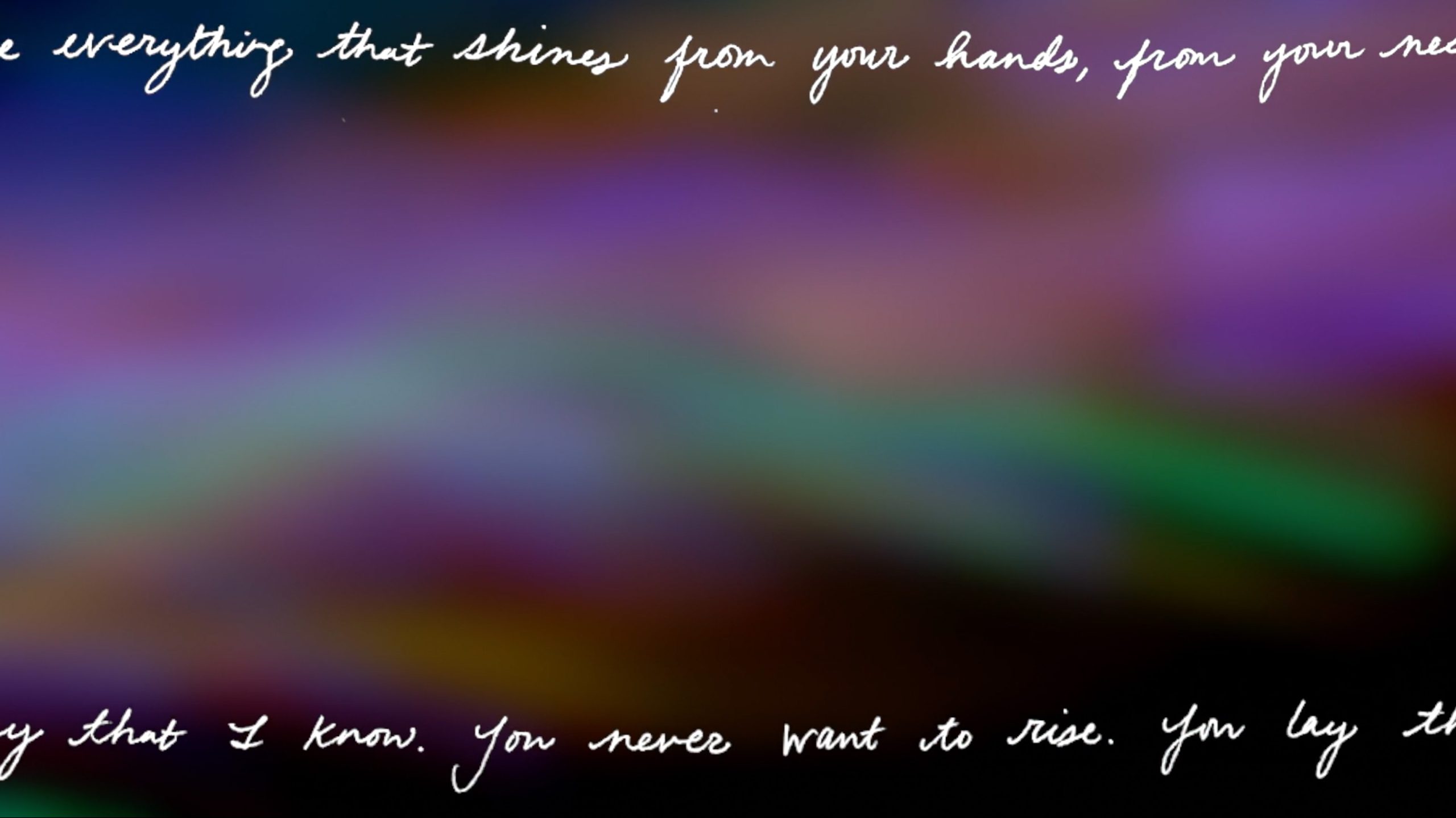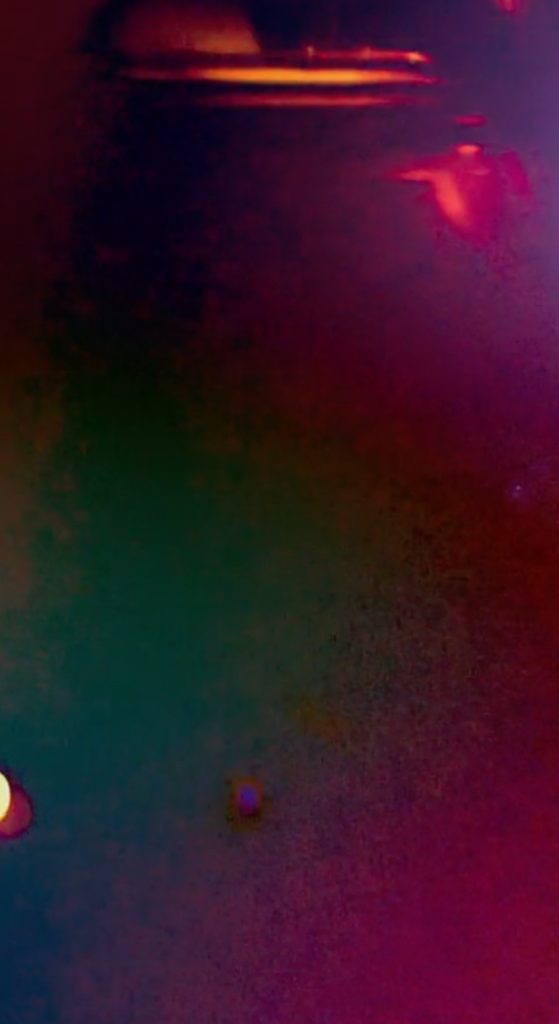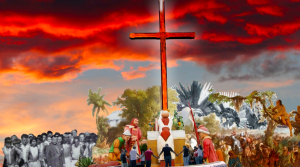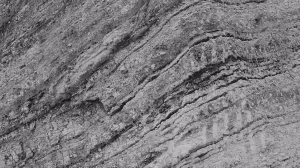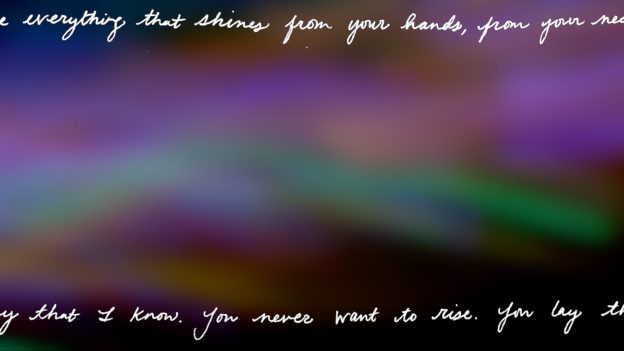
“I Had Too Much to Dream (Last Night)” – A Manifesto
Word Count: 2,187 |
Download this article
by •
011: SLEEP
with FAINTING SPELLS
a video by SKY HOPINKA
Read this essay in French — Read this essay in Russian
Abstract: In this co-authored and experimental piece, Carlos Padrón and Kara Kohn-Gardner demonstrate the collective nature of dreams. As they suggest, through dreams we reach out to one another and find the creative wellspring that can allow for world-making—whether in art or life. The unique role psychoanalysis can play, therefore, in today’s chaotic and divided world, is to hold the space for dreams, both for individuals and for the collective.
The souls of poets [like the soul of the dreamers] … have this peculiar ministration in the world; … these souls, flying like bees from flower to flower and wandering over the gardens and the meadows and the honey-flowing fountains of the Muses, return to us laden with the sweetness of melody.
– Plato
Community is the means by which we gather and share what is common. Psychoanalysis, in its destabilization of subjectivity as belonging to the individual, must embrace those poets, mystics, and philosophers who have thought of the common as unrelated to the proper, to property, and to appropriation. On the contrary: the common is what is most improper.
This thinking inaugurates the possibility of a community-to-come where what we share and gather pertains to more than one: what is public or general in contrast to what is private and individual, says Roberto Esposito. That which is common, public, and general is, following him, not private property but rather a debt, an obligation, or a gift to the other, all of which “establish a lack”: “‘I owe you something’ but not ‘you owe me something.’ This is what makes [the subjects of a community-to-come] less than a master of themselves, and that more precisely expropriates them of their initial property (in part or completely), of the most proper property, namely, their very subjectivity.” Jean-Luc Nancy adds that what we put in common is the voiding of one’s own subjectivity and its exposure to become other, to become improper, to be outside itself: a state of ecstasy. This is one lesson from the mystics.
We say with psychoanalysis: in a community-to-come, what we share is the constitutive lack that prevents our subjectivity from being sutured, from fully appropriating itself, from being “master in its house,” as Freud famously said. Under this condition, Esposito writes, the community produces “a dizziness, a syncope, a spasm in the continuity of the subject.” This disarray is the realm of the unconscious.
Freud says dreams are the royal road to the unconscious. The dream shatters the illusion of subjectivity as a private space, isolated from the common. In dreams, we reach for the other and the other reaches for us. Dreams are a site of community. Dreaming is a collective act. To enter into the community of the unconscious, we must be like honey bees. Everything that honey bees do is for the collective, for the hive: gathering nectar, making honey, protecting the queen.
We propose to imagine a community-to-come of the unconscious, of dreamers who dream awake, where, in the words of Rainer Maria Rilke, “we are the bees of the invisible. We wildly collect the honey of the visible, to store it in the great golden hive of the invisible.”
Freud claims that the dream “behaves … like the painter who groups together all the philosophers or poets in a picture of the School of Athens, or Parnassus. They never were assembled in any hall or on any mountain-top, although to the reflective mind they do constitute a community.” From seemingly disparate material, the dream catapults the self into an unconscious community of the never assembled, much like Bataille’s community of those who do not have a community. Dreams show how our libidinal investments in the world are polymorphously perverse.
we are mangroves
we are mycelia 1
In mourning, we painfully withdraw our love from the remnants of the world we shared with what or whom we lost. We experience the fullness of our love of life through the pain of attachment’s retreat. In mourning, Freud writes, the world becomes “poor and empty.” It is like dreaming in black and white. Dreams overflow our consciousness and then retreat, receding back to the source. They give us a glimpse into the underground network of roots that connect us to others and to the world. Perhaps both mourning and dreaming are forms of regression to an infantile feeling of undifferentiation between me and not-me, the oceanic feeling at the origin of the religious that can both be full and luminous or empty and dark.
listen to a child telling a dream, telling a nightmare
Those who are too awake don’t dream. The way of the dream is the royal way to being awake. Wakefulness is on the side of the status quo, ideology, the universality of money, and the spectacle, any commodification of experience. Freud says that the dream is an attempt at satisfying a wish. As an attempt, the dream is an essay, a form of playful writing, a fort-da, a back and forth, perhaps a way of circling a satisfaction that is never touched, or better: touched in its fugue. Like trying to grab an oily object by grabbing it harder.
This gap created by the attempt that is the dream is the space of desire. It opposes the literality, the concreteness, of wakeful actuality. The dream adds something else to our reality that is not a repetition of our ordinary waking lives. This something else is a pure potentiality that is contained in a tense that is not past, present, or future.
According to ancient Toltec wisdom, even the awake mind is created from a dream. For psychoanalysis, our experience of reality, in being mediated by fantasy, is also dream-like. Psychoanalysis is the only form of therapy that gives all power to the imagination and allows us to speak the dream. It is a space of illusion, from the Latin ludere, to play. The psychoanalytic process opens up a space where we can play and be in touch with, or recover when lost, an originary aliveness that Winnicott calls “creativity.” “Presumably,” he says, “it belongs to the aliveness of some animals as well as of human beings.” This originary aliveness, or creative impulse, is present in the artist who produces a work of art, but it is also present when anyone “looks in a healthy way at anything or does anything deliberately, such as making a mess with feces or prolonging the act of crying to enjoy a musical sound or enjoying breathing, etc.”
In inviting us to dream through free association, psychoanalysis taps into an aliveness that, paradoxically, can typically only be found in sleep. The collapse of our capacity to dream stems from being unable to tolerate that a totally unbroken world is an impossibility. What psychoanalysis calls “concreteness”—the inability to symbolize—is therefore intensified by losing hope in meaning-making and world-making. Psychoanalysis makes explicit the interconnection between our dreaming and waking lives, an intertwinement which, as Thea Ballard says, makes possible the creation of new forms of life, art, and, we might add, community. Psychoanalysis is a praxis of poiesis, the coming into being of the new. It is a deliberate mess, a controlled chaos, a jazz-like improvisation through which the unexpected can emerge.
Puck: no more yielding but a dream
– Shakespeare
I try unsuccessfully to reach a beach. It is a beach I visited in my childhood or maybe imagined visiting. The dream is barely lit. A crepuscular scene. I finally reach the beach. I need to find a hotel to stay in. I am told that my room is number 4X. I strive to find it but everything becomes a maze with confusing signs. I never find the room.
I watch you eat apricots in the car. We are talking about Sylvia Plath.
You lay in the grass and talk in a British accent. It sounds dumb.
I am in a play but can’t remember my lines.
who is the poet that haunts your dreams
Dreams are fed from a poetic source, a giant well where everyone comes to drink a little cup of dream. Dreams are reservoirs of metamorphosis. A dream continues to live and change when we tell it to another; it demands circulation or contagion. Unconscious life flows among us through the hidden vessels of the words we use to share our dreams. Dreams are angels, messengers of our common suffering and desire. Rilke reminds us that angels are terrifying because they show us our divinity and our devilry.
I had a terrible dream about feeding mice to a snake.
You and I hooked up. It was good.
You were seeing E. for $55 a session twice a week.
who is the poet that haunts your dreams
I watch you choke on noodles and laugh.
In dreams, we are also:
Sadists
Murderers
Perverts
Deranged Poets
Priests
Racists
Sexists
Homophobes
Transphobes
Xenophobes
Politicians
Psychoanalysts?
You
Psychoanalysis tells us that a community must take into account these unconscious forces and impulses that shape our experiences of the world: the violent projections and introjections through which we make each other abject objects.
Dreams, like psychoanalysis, envision a possible future based on the unfulfilled promise of our past ecstasies and our past catastrophes. Freud claims that “in every sense a dream has its origin in the past. The ancient belief that dreams reveal the future is not indeed entirely devoid of the truth. … [The dream] has been shaped in the likeness of the past by the indestructible wish.” This indestructible wish is a drive toward a community-to-come: a community that is already contained within our present community of the unconscious, in dreams.
Be a bee.
The title to this essay is taken from the song of the same name by The Electric Prunes (1966).
1 The image of the mangrove is one that Édouard Glissant uses in his work.
Ballard, Thea. “Jackie Wang’s Dream Poetics“. The Nation. 2021.
Esposito, Roberto. Communitas: The Origin and Destiny of Community. Stanford University Press, 1998.
Freud, Sigmund. “Civilization and Its Discontents.” The Standard Edition of the Complete Psychological Works of Sigmund Freud, Volume XXI (1930), edited and translated by James Strachey, Hogarth Press, 1966.
—. “The Interpretation of Dreams.” The Standard Edition of the Complete Psychological Works of Sigmund Freud, Volume IV and V (1900), edited and translated by James Strachey, Hogarth Press, 1953.
—. “Mourning and Melancholia.” The Standard Edition of the Complete Psychological Works of Sigmund Freud, Volume XIV (1915-1916), edited and translated by James Strachey, Hogarth Press, 1957.
Glissant, Édouard. Poetics of Relation. University of Michigan Press, 1997.
Nancy, Jean-Luc. The Inoperative Community. University of Minnesota Press, 1991.
Plato. “Ion.” The Collected Dialogues of Plato. Princeton UP, 1989.
Rilke, Rainer Maria. Duino Elegies. Pushkin Press, 2022.
Shakespeare, William. “A Midsummer Night’s Dream.” The Arden Shakespeare Complete Works. Bloomsbury, 2011.
Winnicott, D.W. “Creativity and Its Origins.” Playing and Reality. Routledge, 1971.
FAINTING SPELLS
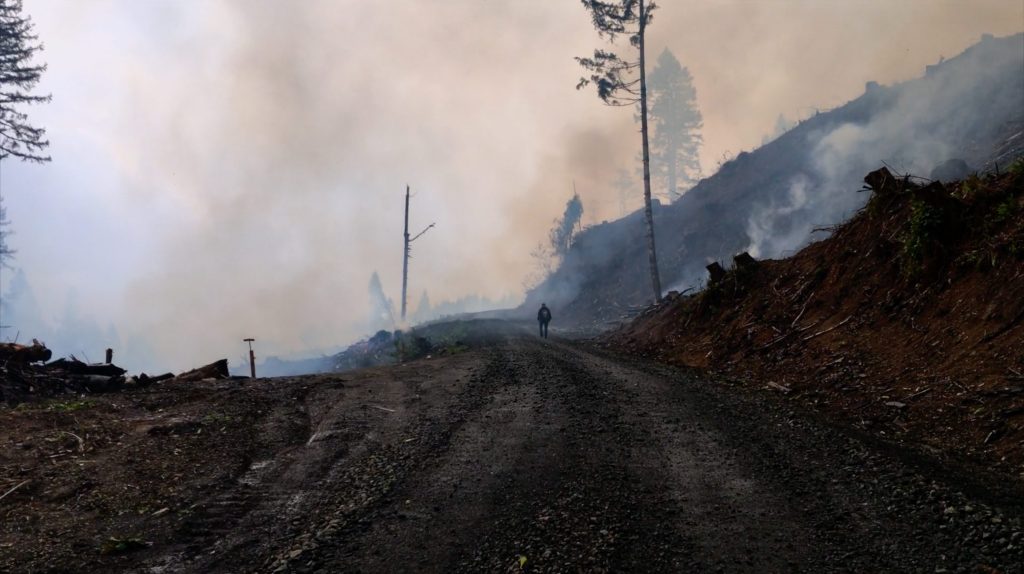
Told through recollections of youth, learning, lore, and departure, this is an imagined myth for the Xąwįska, or the Indian pipe plant, used by the Ho-Chunk to revive those who have fainted.
– Sky Hopinka
KARA KOHN-GARDNER writer
Kara Kohn-Gardner is a social worker from the Silberman School of Social Work, a psychotherapist, and a candidate in psychoanalytic training at The Institute for Psychoanalytic Training and Research in NYC. She has a background in educational policy, research, and writing (MA, Teachers College). She is interested in religious themes and fantasies in psychoanalysis. She also loves honeybees. You can follow her on Instagram: @karadoe.
CARLOS PADRÓN writer
Carlos Padrón is a psychoanalyst with a background in philosophy and literature practicing and supervising in NYC. He has written and presented on the relations between philosophy, politics, and psychoanalysis, on community psychoanalysis, and on clinical issues related to difference: race, ethnicity, gender, immigration, etc. Carlos has taught at different academic and psychoanalytic institutions, and is a clinical associate of the New School Psychotherapy Program. He appeared in the documentaries Psychoanalysis in El Barrio and Psychoanalysts on the Couch: Notes from a Pandemic. He believes psychoanalysts should get their asses out of the consulting room and into the world. You can follow him on Instagram: @carlospadron_psychoanalysis.
SKY HOPINKA artist
Sky Hopinka (Ho-Chunk Nation/Pechanga Band of Luiseño Indians) was born and raised in Ferndale, Washington and spent a number of years in Palm Springs and Riverside, CA; Portland, OR; and Milwaukee, WI. In Portland, he studied and taught Chinuk Wawa, a language indigenous to the Lower Columbia River Basin. His video, photo, and text work centers around personal positions of Indigenous homeland and landscape, designs of language as containers of culture expressed through personal and non-fictional forms of media.
FAINTING SPELLS (2018): 10:45min video, color, stereo
© Copyright for all texts published in Stillpoint Magazine are held by the authors thereof, and for all visual artworks by the visual artists thereof, effective from the year of publication. Stillpoint Magazine holds copyright to all additional images, branding, design and supplementary texts across stillpointmag.org as well as in additional social media profiles, digital platforms and print materials. All rights reserved.
